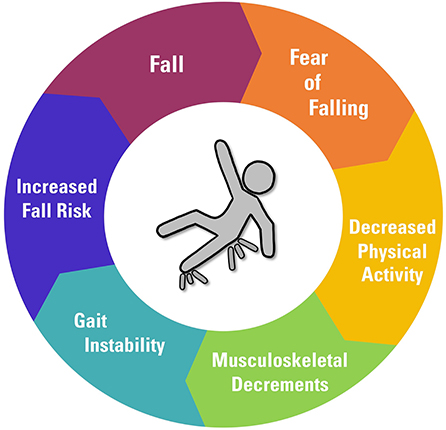A Biased View of Dementia Fall Risk
Dementia Fall Risk for Dummies
Table of ContentsThe Best Strategy To Use For Dementia Fall RiskThe smart Trick of Dementia Fall Risk That Nobody is Talking AboutNot known Facts About Dementia Fall RiskNot known Factual Statements About Dementia Fall Risk The Basic Principles Of Dementia Fall Risk
You might be worried because you have actually had a fall prior to or because you have actually observed you're beginning to feel unstable on your feet. You might have noticed modifications to your health, or simply feel like you're reducing a little. Whatever the reason, it isn't uncommon to come to be cautious and shed confidence, and this can stop you doing the important things you used to do and make you feel a lot more isolated.If you have actually had a fall or you have actually begun to feel unstable, inform your doctor even if you feel great or else. Your medical professional can check your equilibrium and the means you stroll to see if improvements can be made. They might have the ability to refer you for a falls threat assessment or to the falls prevention service.
This info can be acquired via meetings with the person, their caretakers, and a testimonial of their medical records. Begin by asking the specific concerning their background of drops, including the frequency and situations of any type of current drops. Dementia Fall Risk. Inquire concerning any kind of mobility problems they might experience, such as unstable or trouble strolling
Conduct a comprehensive evaluation of the individual's medications, paying particular attention to those known to boost the threat of falls, such as sedatives or medications that lower blood stress. Establish if they are taking multiple medications or if there have been recent modifications in their medicine routine. Review the individual's home environment for possible threats that can boost the threat of drops, such as inadequate lights, loosened rugs, or lack of grab bars in the washroom.
Getting The Dementia Fall Risk To Work
Overview the person through the autumn threat assessment kind, explaining each inquiry and recording their reactions precisely. Compute the total threat score based on the reactions given in the analysis type.
Regularly keep an eye on the person's progress and reassess their risk of drops as required. Give ongoing education and support to promote security and minimize the danger of drops in their day-to-day living tasks.
Numerous research studies have shown that physical treatment can assist to decrease the risk of falling in adults ages 65 and older. In a new study (that looked at falls threat in females ages 80 and older), scientists determined the economic influence of selecting physical therapy to stop drops, and they discovered that doing so conserves $2,144, consisting of navigate to this site all the covert costs of your time, pain, missed out on life events, have a peek at this website and the dollars spent for solutions.
The Definitive Guide for Dementia Fall Risk
Examining your equilibrium, toughness, and walking capability. A home safety and security assessment. Based on the examination results, your physical specialist will create a plan that is tailored to your particular demands.
Older grownups who have problem strolling and chatting at the very same time are at a higher risk of falling. Dementia Fall Risk. To assist boost your safety and security during everyday activities, your physical therapist may create a training program that will certainly test you to maintain standing and walking while you do one more task. Instances consist of strolling or standing while counting backward, having a conversation, or bring a bag of groceries
Establish objectives for boosting their physical activity. Exercise much more to enhance their strength and balance. These programs usually are led by volunteer trains.
Some Known Factual Statements About Dementia Fall Risk

Measles, or rubeola, is a very transmittable, intense viral transmittable illness triggered by the measles virus. Some people consider measles as simply a breakout and high temperature that cleans up in a couple of days; nevertheless, measles can cause serious wellness difficulties, specifically in kids younger than 5-years-old. The best defense versus measles is the measles, mumps, and rubella (MMR) injection.
Autumns are a common reason of injury among older adults.
A Biased View of Dementia Fall Risk

She has a clinical background of seizure problem and hypertension. She is getting an IV mixture and taking Gabapentin and Lasix. She has no background of falls, her stride is steady, webpage and she nullifies without problems. The previous nurse states that she asks for assistance to the shower room when she requires to go.
Instances of usual loss interventions/measures include: Ensuring a patient's essential things are within reach. Putting the patient's bed rails up with the alarm on. Helping a client while they're standing up from bed. Beyond understanding exactly how to use the Johns Hopkins Autumn Threat Assessment Tool, it is necessary that facilities include its usage right into an extra detailed loss prevention plan.